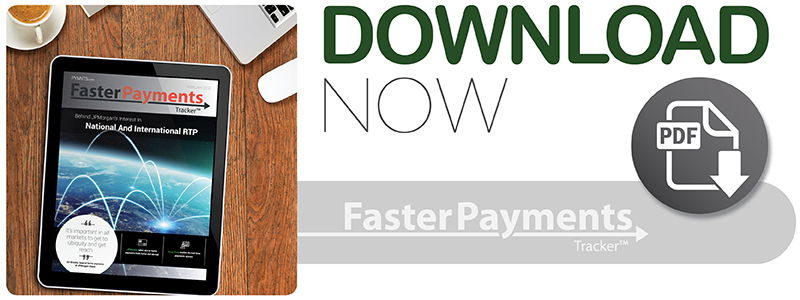Chase Talks Real-Time Payments, Real-Time Ubiquity
More than two dozen real-time payment schemes are live around the world, and more and more countries are planning to debut their own in the near future.
In the February Faster Payments Tracker™, PYMNTS charts the latest developments surrounding these real-time schemes, and the push to bring them all into communication with each other.
Around the Faster Payments world
Australia has ambitions of making the faster payments leap, and the country is marching to get its New Payments Platform real-time scheme up and running this year. When released, players Down Under will have access to round-the-clock settlements, richer data and the ability to send transactions by supplying a recipient’s phone number, email address or Australian business number.
Hong Kong is also preparing to launch its new payments scheme in 2018. The country’s service aims to link major banks and eWallet operators, and is considering a second scheme — one designed to enable QR code-based payment of government bills.
If all goes as planned, Australia and Hong Kong’s services will be followed a year later by the launch of Hungary’s in-development instant payments framework. Giro, which controls almost all the country’s interbank payments and clearing, recently tapped Nordic payment processor Nets to develop the platform.
Finding instant payment ubiquity
Meanwhile, in the U.S., JPMorgan Chase has been watching these and other faster payment developments with interest.
The bank sees faster payments as an important service for its corporate clients. But as Art Brieske, head of faster payments at JPMorgan, explains to PYMNTS in this month’s feature, achieving the full potential of real-time payments — and the most benefit to internationally operating clients — means not just being part of the Real-Time Payments network. It also means making RTP ubiquitous throughout the U.S. and ensuring schemes can work smoothly together across countries’ borders.
“It’s important in all markets to get to ubiquity and get reach,” Brieske said. “We’re doing that now in the U.S. The same thing is happening in Europe across the SEPA zone. …What we really need is for the all banks at the national level to participate, either directly or indirectly, so we have that ubiquity.”
Find that story, along with the latest News and Trends from around the Faster Payments ecosystem, inside the new Tracker.

